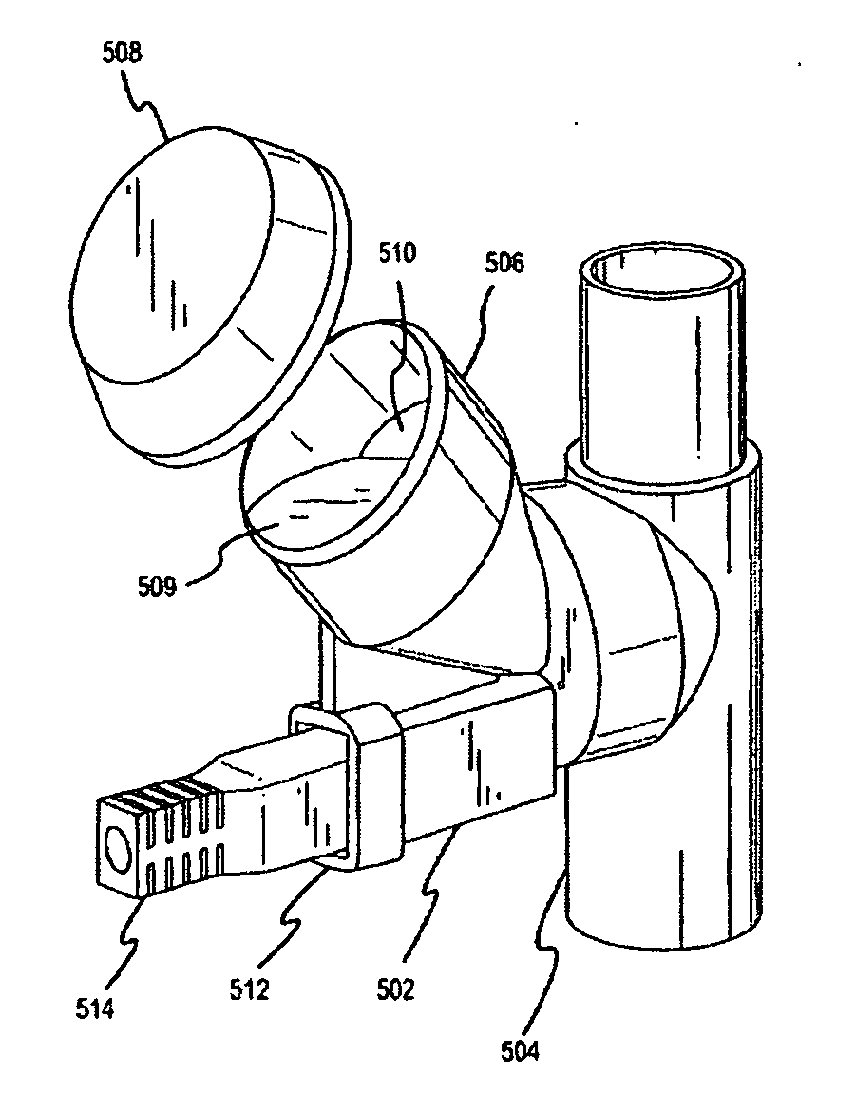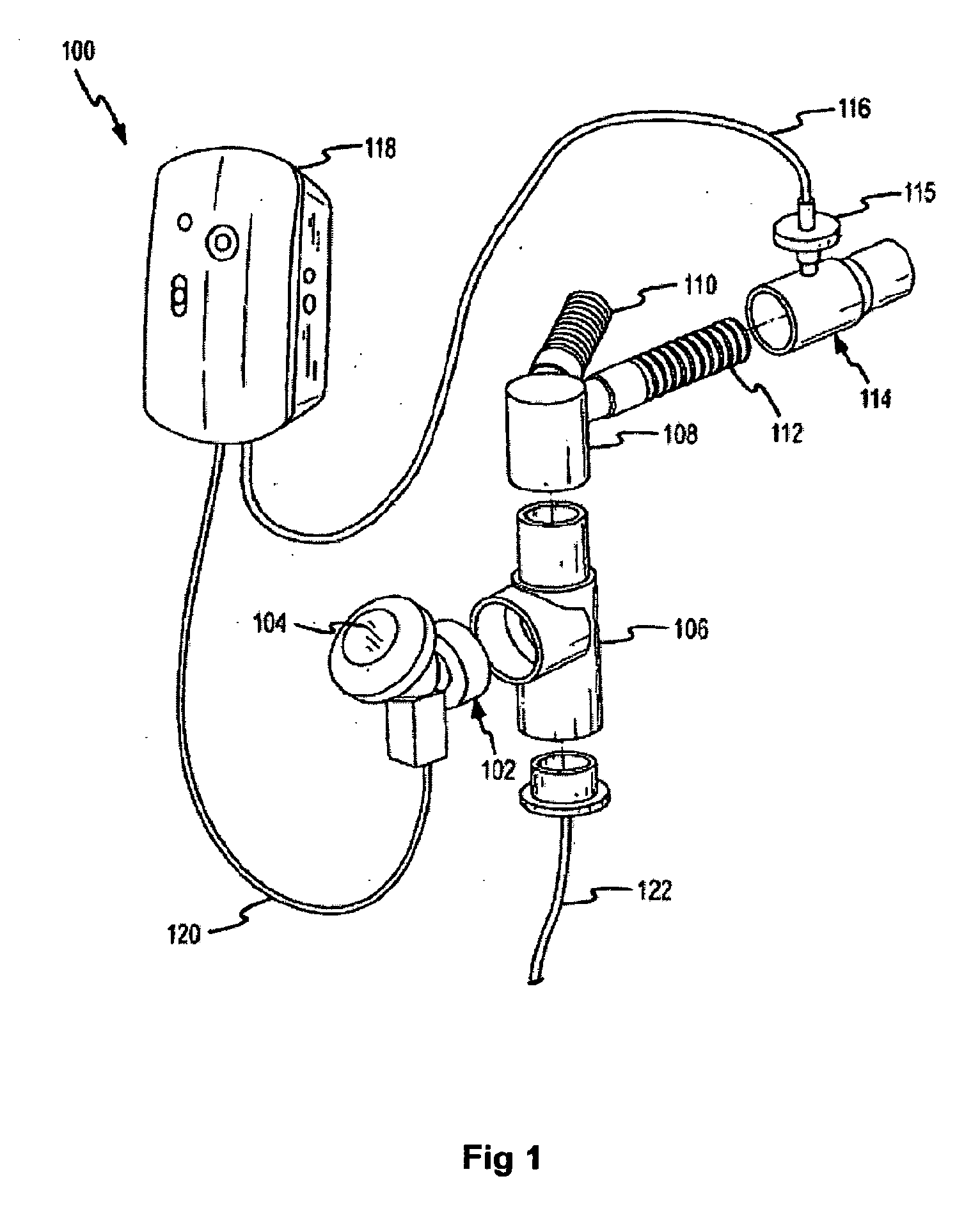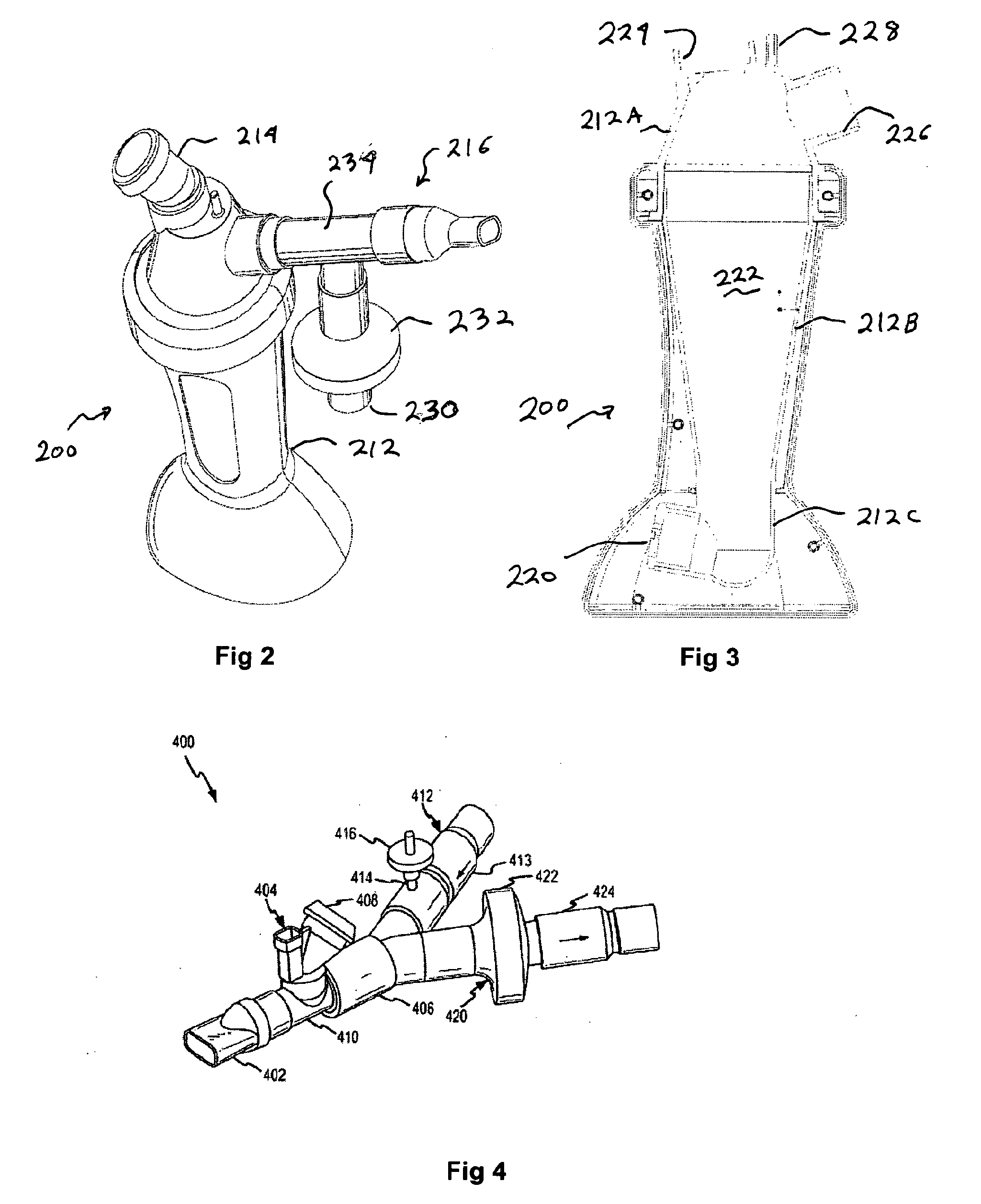Treatment of pulmonary disorders with aerosolized medicaments such as vancomycin
a technology of aerosolized medicaments and pulmonary disorders, which is applied in the direction of aerosol delivery, antibacterial agents, drug compositions, etc., can solve the problems of persistent problems, pneumonia, gram-negative bacteria and/or gram-positive bacteria, and still may exist problems with aerosolized medicament delivery, etc., to reduce the amount of systemically administered second antibiotics and reduce the need for systemically administered antibiotics
- Summary
- Abstract
- Description
- Claims
- Application Information
AI Technical Summary
Benefits of technology
Problems solved by technology
Method used
Image
Examples
Embodiment Construction
[0096]As noted above, conventional nebulizer-ventilator systems have low medicament delivery efficiency (e.g., less than 20%). Embodiments of the invention include methods and systems for increasing delivery efficiencies to, for example, at least 25% or at least 30% or at least 40%, at least 50%, at least 60%, at least 70%, at least 80%, or more. The increased efficiency for delivering the aerosolized medicament may be attributable, in part, to one or more features that may be implemented in embodiments of the invention. These features include synchronizing the generation of aerosol with an inspiratory phase of the ventilator cycle (e.g., phasic delivery). The features may also include supplying air (e.g., an “air chaser”) following aerosol generation, which can clear the endotracheal tube and reduce the amount of medicament exhaled by the patient. Features may further include connecting the aerosol generating unit directly to the hub of the endotrcheal tube that is connected to the...
PUM
 Login to View More
Login to View More Abstract
Description
Claims
Application Information
 Login to View More
Login to View More - R&D
- Intellectual Property
- Life Sciences
- Materials
- Tech Scout
- Unparalleled Data Quality
- Higher Quality Content
- 60% Fewer Hallucinations
Browse by: Latest US Patents, China's latest patents, Technical Efficacy Thesaurus, Application Domain, Technology Topic, Popular Technical Reports.
© 2025 PatSnap. All rights reserved.Legal|Privacy policy|Modern Slavery Act Transparency Statement|Sitemap|About US| Contact US: help@patsnap.com



